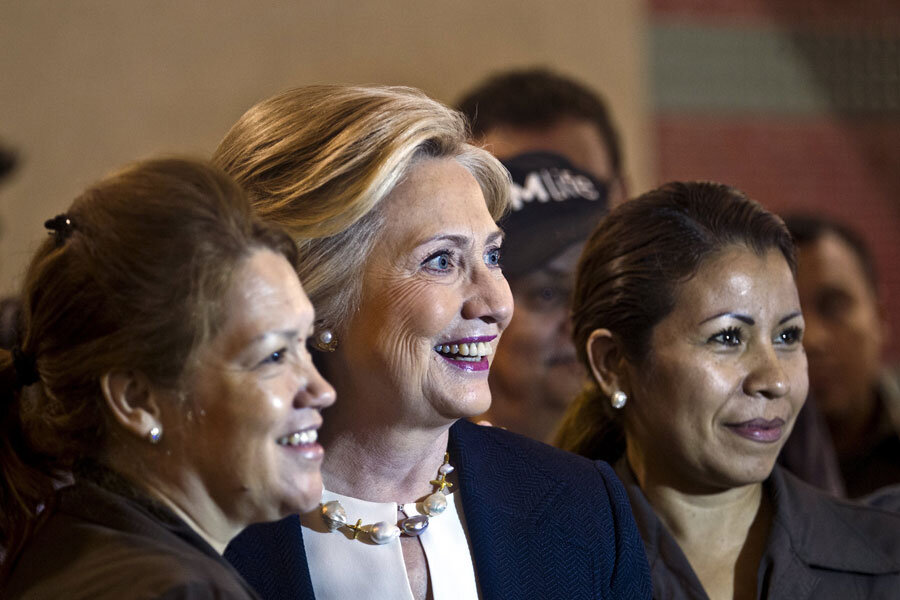Nevada caucuses: Who has the Hispanic vote?
Loading...
As the Nevada caucuses approach, GOP and Democratic candidates are scrambling for the Latino vote.
The reason is obvious: in Nevada, 17 percent of all eligible voters are Hispanic. Democratic candidate Hillary Clinton and Republican candidate Marco Rubio have been the presumed front-runners in Nevada because of their Hispanic support in the state, but their victories are becoming less and less certain.
Mrs. Clinton’s campaign focused on Nevada from the beginning, putting organizers on the ground in April 2015, while Vermont Sen. Bernie Sanders hired his first Nevada staffer in October. The former secretary of State has played up Mr. Sanders’s late start in the battleground state, portraying his Latino appeals as disingenuous.
“On the ground, it is really difficult to compare 30 years to 30 days,” said Emmy Ruiz, Clinton’s Nevada director, to CNN. “And that is something we keep hearing from different communities. They have been with her since day one.”
But Sanders doesn’t shy away from Clinton’s "30 years to 30 days" comparison. In fact, he embraces it. The difference embodies Sanders’ anti-establishment campaign, say supporters. Rania Batrice, Sanders’s Nevada spokeswoman, says the campaign’s 12 field offices in Nevada are staffed by young, Hispanic volunteers who believe in Sanders’s “political revolution.”
“This is a system that isn’t working for the everyday person. It’s one of the reasons why I decided to endorse Bernie Sanders,” said Lucy Flores, a former state assemblywoman now running for Congress, in an ad launched in Nevada last week.
And after Sanders’s 22-point win in New Hampshire last week, the Clinton campaign is working to lower expectations for Nevada, where the Democratic caucus will be held Feb. 20.
“You have a caucus-style format, and he’ll have the momentum coming out of New Hampshire presumably, so there’s a lot of reasons he should do well,” said Brian Fallon, a Clinton spokesman, on MSNBC last week.
Between their immigration policies and “incendiary” rhetoric, GOP frontrunners Ted Cruz and Donald Trump likely never stood a chance with the Latino electorate. Marco Rubio, with his Latino heritage, a history of bipartisan immigration efforts, and no viable competitors, seemed to have the Hispanic vote locked up
But in the final days before the Feb. 23 Republican caucus, GOP Latinos in Nevada are sounding less enthusiastic.
"In recent weeks, Rubio has taken a hard-right turn, painting all immigrants as possible terrorists,” following in Mr. Trump and Senator Cruz’s footsteps, said Dolores Huerta, an organizer with People for the American Way, to NBC.
“I think Marco is probably going to win Nevada, but it could be a bellwether for whether the GOP can attract a material portion of the Hispanic vote with Marco, or someone else,” Danny Vargas, a political media consultant, told NBC.
But the battle for Latino voters may not matter much after next week.
“Few states with large Hispanic populations are likely to be key battlegrounds,” explains a January Pew Research Center report. California, Texas, and New York are hardly considered toss-up states, yet together they account for 52 percent of all US Latino voters. Eligible Hispanic voters in contested states such as New Hampshire, Iowa, Ohio, North Carolina, and Wisconsin make up less than four percent of the electorate.
But Florida, Nevada, and Colorado are the outliers in a larger national pattern. Unlike the other 47 states, these three check out in both categories: they are unpredictable in presidential elections and they have a sizable Latino population.
In traditional red or blue states, presidential candidates don’t focus on the Hispanic vote, which in turn leads to a dismal Hispanic voter turnout rate, Pew suggests. In 2012, 64 percent of whites and 67 percent of blacks voted, while only 48 percent of eligible Hispanic voters went to the polls.
Ruy Teixeira, who studies demographic voting patterns at the Center for American Progress, says writing off the Hispanic vote is a “risky strategy” because this demographic has the greatest proportion of young voters.
According to Pew, almost 12 million Hispanic millennials are already eligible to vote, and that number is growing with every election. For now, their numbers are dwarfed by the 42 million white, non-Hispanic millennials, but they already account for almost as large a voting block as the Asian (3 million) and black (10 million) millennial demographics combined.
[Editor's note: The headline on the original version of this article misstated the format by which Nevada Republicans and Democrats will select presidential candidates for each party.]








